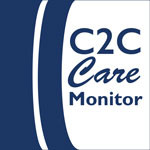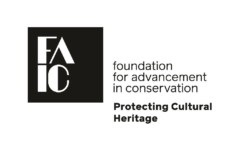Construction Vibration and Collections
- This topic has 4 replies, 3 voices, and was last updated 6 years, 3 months ago by
Libby S.
-
AuthorPosts
-
-
December 20, 2017 at 11:08 am #137817
Libby S
ParticipantGood morning. Recently we found out that a building located next to the museum (92 feet away) will be demolished in January and a new building constructed soon after. Along with the building demolition, there will be several months of drilling into the surrounding bedrock. Currently, the owners of the nearby building are paying to have three seismographs placed in the museum, on floors closest to the construction.
I wanted to see if anyone had some advice for preparing for this construction and what we can do during the construction to prevent/minimize damage. From what I have read so far, there is not necessarily a set standard for what vibration velocity will cause damage, but would you have some recommendation to look out for? Thank you everyone!
-Libby Stoesz
-
December 20, 2017 at 11:59 am #137818
 Nicole PetersParticipant
Nicole PetersParticipantHello Libby,
Thanks for your question. It certainly is an interesting topic. I am going to reach out to some colleagues who recently dealt with a similar situation and how their institution dealt with building vibrations caused by construction work.In the interim, I’ve attached a few documents about the topic.
One by D. Thickett from the British Museum:
http://www.english-heritage.org.uk/content/learn/conservation/2543455/2543024/vibration-rio.pdf
And another by S. Davis, et al.,
http://resources.conservation-us.org/wp-content/uploads/sites/8/2015/03/osg021-12.pdfWhat is the nature of your collection (is it predominantly archaeological, ethnographic, contemporary, etc.)? The age and materials of your artifacts will influence the precautions you take in preparing for your neighbor’s construction work.
In general, my first thought is that you will want to identify which artifacts are inherently the most vulnerable and susceptible to potential damage caused by prolonged vibrations (items with flaking/cracked paint systems, brittle media, older/archaeological composite artifacts, etc.). You will also want to look at your exhibit mounts and where/how they come in contact with the surface of the artwork. Constant vibrations incurred by the mount on the artifact can result in localized abrasions/loss/damage in the areas of direct contact.I will do some more research and consult with my colleagues and get back to you with some more information.
Thanks,
Nicole -
December 21, 2017 at 11:33 am #137846
 Tammy ZavinskiParticipant
Tammy ZavinskiParticipantHi Libby,
In addition to the excellent resources Nicole has sent your way, your question brings to mind studies on the impact of vibrations on cultural heritage property presented at the Smithsonian a few months ago. I will see if I can find the publication accompanying the presentation, but I believe it related to the following study
Kamba, N., H. Wada, M. Tsukada, Y. Takagi, and K. Imakita, “Measurement and analysis of the global transport environment for packing cases for artifacts”, Conservation and Access:Contributions to the 2008 IIC Congress, London.
In the meantime, here is additional information (attached) from that same 2008 IIC Conference…
Kind regards,
TammyAttachments:
You must be logged in to view attached files. -
December 26, 2017 at 2:16 pm #137862
 Nicole PetersParticipant
Nicole PetersParticipantHi Libby,
I haven’t been able to touch base with my colleagues yet (likely due to the holidays), however, I will attach a Jerry Podany article on seismic damage mitigation; several of Podany’s publications on vibration damage and mitigation are included in the excellent bibliography Tammy provided in her previous response. Very good reads! I suspect they will be helpful in your preparation for the upcoming construction.The articles Tammy and I have shared cover preventative methods that range from installing customized seismically-stable mounts to laying down some Ethafoam to mitigate vibrations. A great deal of what you are going to be able to provide for your museum during the construction work is directly related to your resources, time, and budget. Ideally, it might be beneficial to have a conservator come in to do a consultation and brief survey of the collection prior to construction (once again, this will depend on the time and funds you have available.) There are several efficient, inexpensive ways to protect your collection as well, such as lining mount tables/decks with archival foam (such as Volara), temporarily deinstalling very delicate artifacts until the construction is over, installing auxiliary supports around items at risk of toppling or wiggling out of their mounts, etc.
Another potential hazard related to the neighboring construction is diminished air quality. Depending on your HVAC system and/or your air intake/filtration system you may need to consider increasing the frequency of housekeeping/preventative conservation tasks such as dusting, surface cleaning, and vacuuming.
NEDCC has a great article on general practices during renovation projects (with a great checklist at the end).
https://www.nedcc.org/free-resources/preservation-leaflets/3.-emergency-management/3.9-protecting-collections-during-renovationI hope this helps, Libby. I will continue to reach out to my colleagues in order to provide you with more information as needed. Thanks!
Best,
Nicole -
December 27, 2017 at 1:57 pm #137867
Libby S
ParticipantNicole and Tammy,
Thank you so much for your help! The papers and suggested examples are already helping with developing a plan.
Our collections are made up of several different disciplines, mostly all natural sciences. They include geology, mammology, entomology, archaeology, botany, conchology, paleontology and ornithology. The large majority of the collections (especially the birds, animals and insects) were collected between the 1870’s and the 1970’s. The pieces have only been in a specifically climate controlled area since about the 1980’s.
I have wondered about the air quality as well. Our HVAC appears to be up to the task but I like your suggestion about increasing housekeeping rounds and monitoring.
Thank you,
-Libby
-
-
AuthorPosts
- The forum ‘Connecting to Collections Care Forum Archives – 2015 through 2018’ is closed to new topics and replies.




